As homesteaders, we don’t eat out a lot because we prefer to raise our own healthy food. But sometimes it’s nice to splurge when we are out for the day. When we do, I love having Asian food. Chinese, Thai, and Japanese are some of my favorite cuisines when dining out.
Asian cuisine features all sorts of vegetables in dishes. In fact, the bulk of Asian dishes are vegetables stir-fried or sautéed in wonderful simmering sauces. Not to mention sushi bowls and vegetables smothered in phanaeng (aka panang) curry.
So I began thinking, why don’t I start growing more of the foods that I love to experience when I eat at Asian restaurants? Asian cooking is fun, healthy, and best of all, easy to whip up quickly.
In this article, I am going to tell you about four of my favorite Asian vegetables. I will include how to grow them, and how to prepare them so you can make excellent dishes from your own garden.
But there are many Asian vegetables for you to explore so go through your seed catalogs and pick out a few you want to try. Then find your own specialties.
Bok Choy
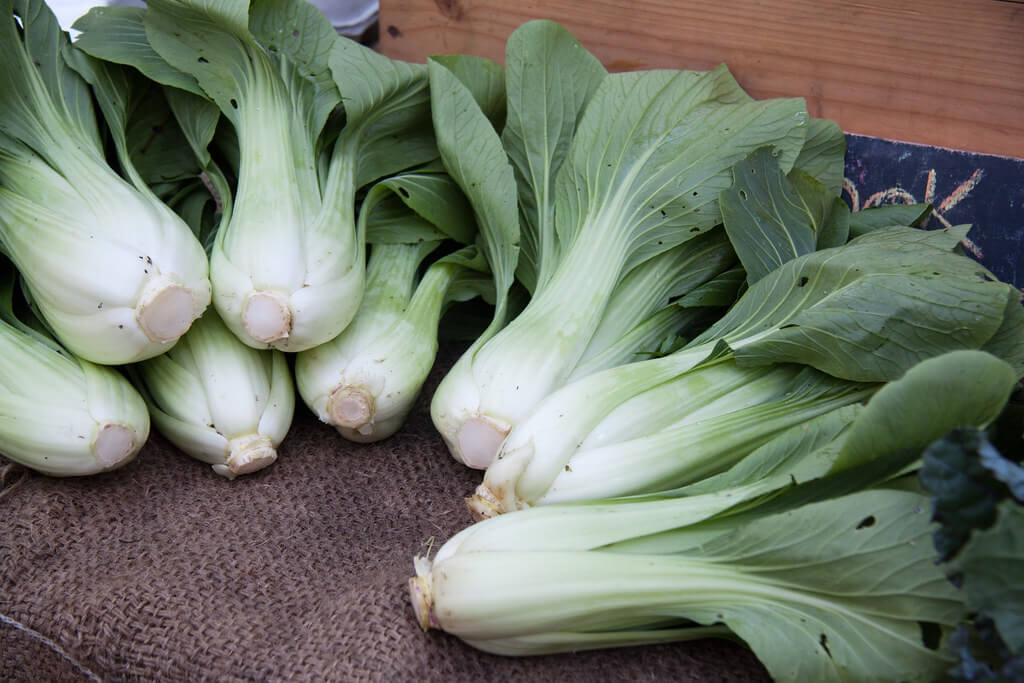
Bok choy is one of my very favorite vegetables, and my children love it too. Bok choy is sweet and crunchy and can be eaten raw or cooked in a stir fry.
Bok choy is high in several essential nutrients including vitamins C, A, and K, so you can feel good about serving it to your family. It is also high in the minerals potassium and iron. Bok choy is great cut up and used for stews on those late fall chilly days.
You will see bok choy spelled a variety of ways in the seed catalogs. Choi is often used instead of choy.
There are many varieties of bok choy. One of my favorites is Black Summer available from Johnny’s Seeds. It is more heat tolerant, making it a smart choice for gardeners in Southern states.
Growing Bok Choy
Bok choy is in the mustard family and appreciates cool weather. For most of us, this means it makes a great spring and fall crop. This biennial will bolt to seed in hot weather, but using shade cloth will prolong the season.
Related Post: 10 Perennial Vegetables For Years Of Garden Freshness
You can start seeds indoors or direct seed into an established bed. For spring plantings, start seeds indoors five weeks before your last expected frost date. You can also sow them directly in the garden two weeks before that date.
Cover your seedlings with row covers if nighttime temperatures dip below 50 degrees Fahrenheit. You may also use row cover to protect young crops if flea beetles are a problem in your area.
Depending on the variety, bok choy matures in 45 to 60 days and does well in zones 4 through 7. Plants should be 6 to 10 inches apart in rows 2 feet wide.
While it prefers part shade with about four hours of sun a day, bok choy will also flourish in full sun. It appreciates regular watering throughout the season.
Bok choy is a heavy feeder so plant it in an area that has had a liberal application of compost. Use an organic fertilizer such as fish emulsion weekly.
Daikon Radish
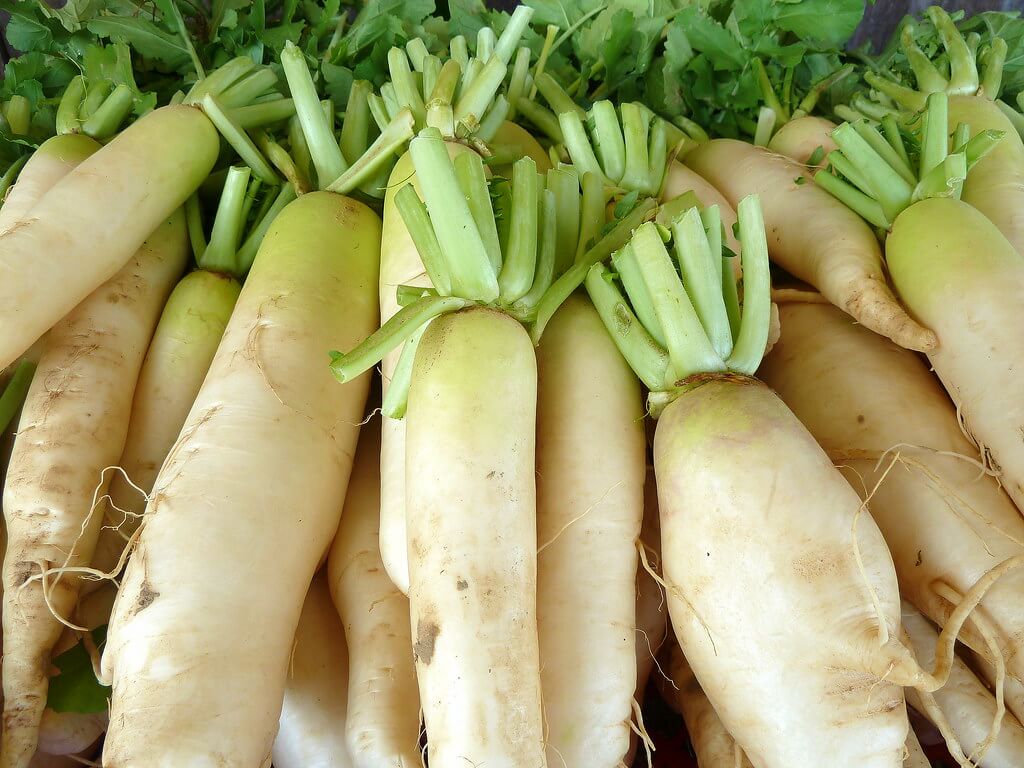
I like to eat daikon radishes roasted with other root crops. I just cut up whatever root crops I have available such as carrots, radish, turnip, parsnips, and beets, put them in a greased pan, and sprinkle them with garlic salt, pepper, and oregano. I roast them at 375 degrees Fahrenheit for about 45 minutes or until tender.
Related Post: Growing Carrots
Daikon radishes are used in Japan and China similarly to how we use cucumbers in America. They are often used to make pickles, relish, and sauces. In Japan, they are commonly served with sashimi. But like the cucumber, they are great in salads and stir fry too.
Growing Daikon Radishes
Growing daikon radishes is similar to growing more traditional radishes. However, they are larger and take longer to mature.
With their long-tapered root, the daikon radish needs deeply dug fertile soil. Their growing needs are similar to carrots. If your soil is heavy, consider adding some sand or grow them in raised beds.
They like a pH of 5.8 to 6.8 and do well in spring through fall. In winter, daikon radishes make a good greenhouse or cold frame crop. They take a little longer than traditional radishes and mature in 55 days. With proper cover, daikon radishes can be grown as far north as zone 3.
Japanese Eggplant
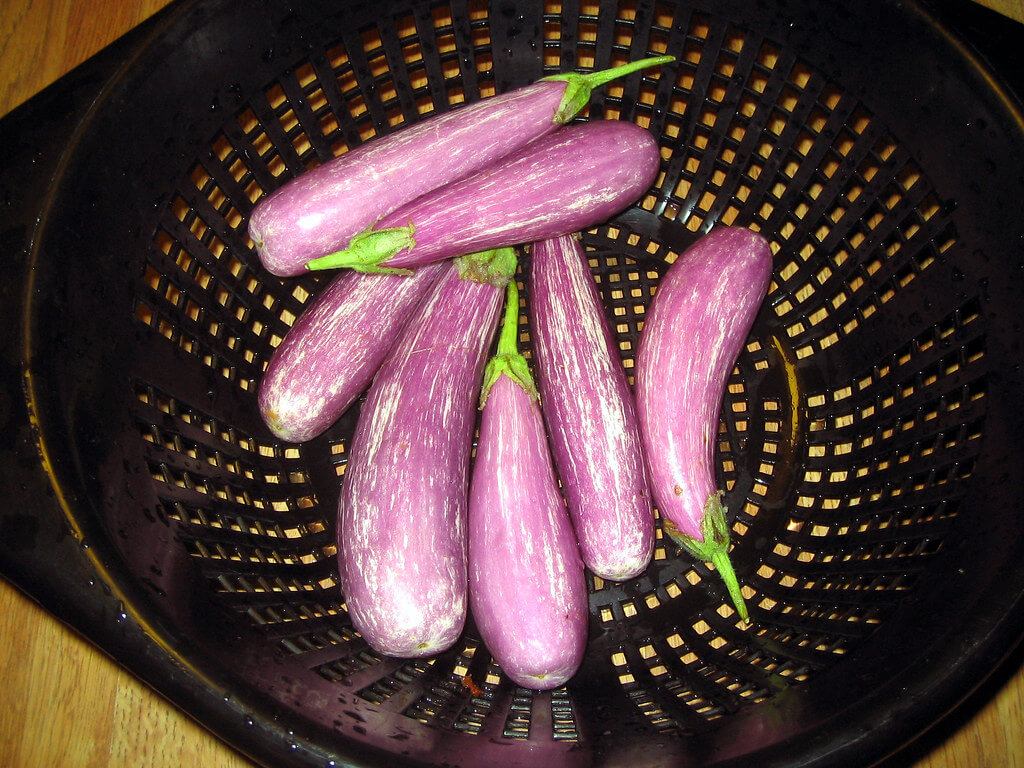
As you can tell by my name, I am Italian. Growing up, I ate a lot of Parmesan made with traditional Italian eggplant varieties such as Rosita.
But a few years ago, I discovered Japanese varieties such as Ping Tung and Swallow eggplant. The Japanese eggplant is a long thin fruit with sweet flesh. It is great for chopping up into stir-fry and soups.
If you love firing up the grill in the summer try this recipe for grilled Japanese Eggplant from Bobby Flay.
Growing Japanese Eggplant
Japanese eggplant loves the sun and warm weather. It’s in the same family as tomatoes and peppers. In fact, they thrive in zones 4 through 10 during the summer with the ideal temperature ranging from 75 to 90 degrees Fahrenheit.
Related Post: Companion Planting For Eggplant
It is best to grow eggplant from transplants. Start your seeds inside about nine weeks prior to your last frost date. You can also purchase transplants at your local nursery. Direct seeding is not recommended as they take a long time to mature.
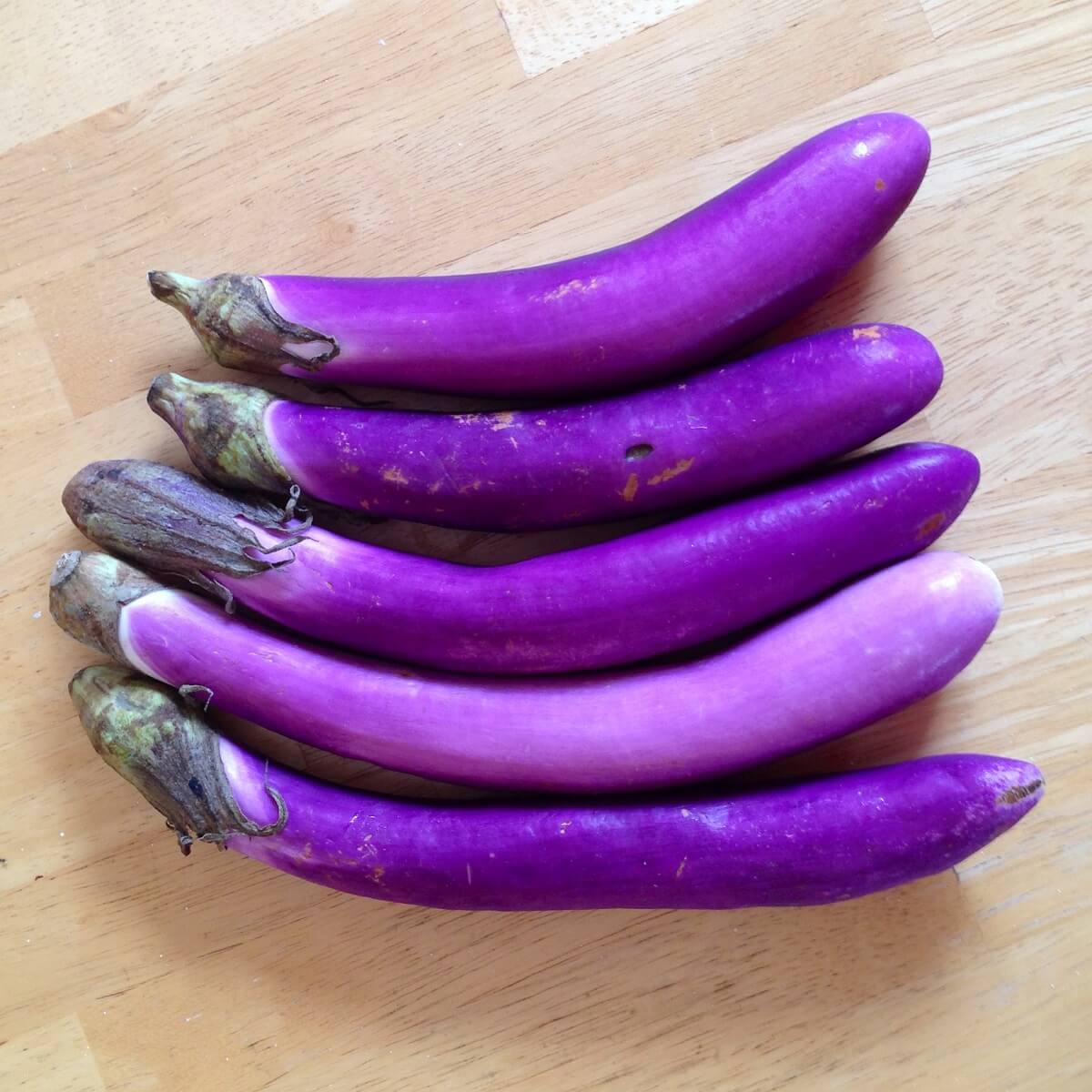
Transplant into fertile garden soil when the temperature rises into the 70s. Eggplant prefers a location in full sun and loose soil with lots of compost. Space your plants about 18 inches apart.
Japanese eggplant is prone to pests so keep your eyes peeled for flea beetles and hornworms. Eggplant is also prone to mildew. A good organic spray such as neem oil can help control these.
Soybeans
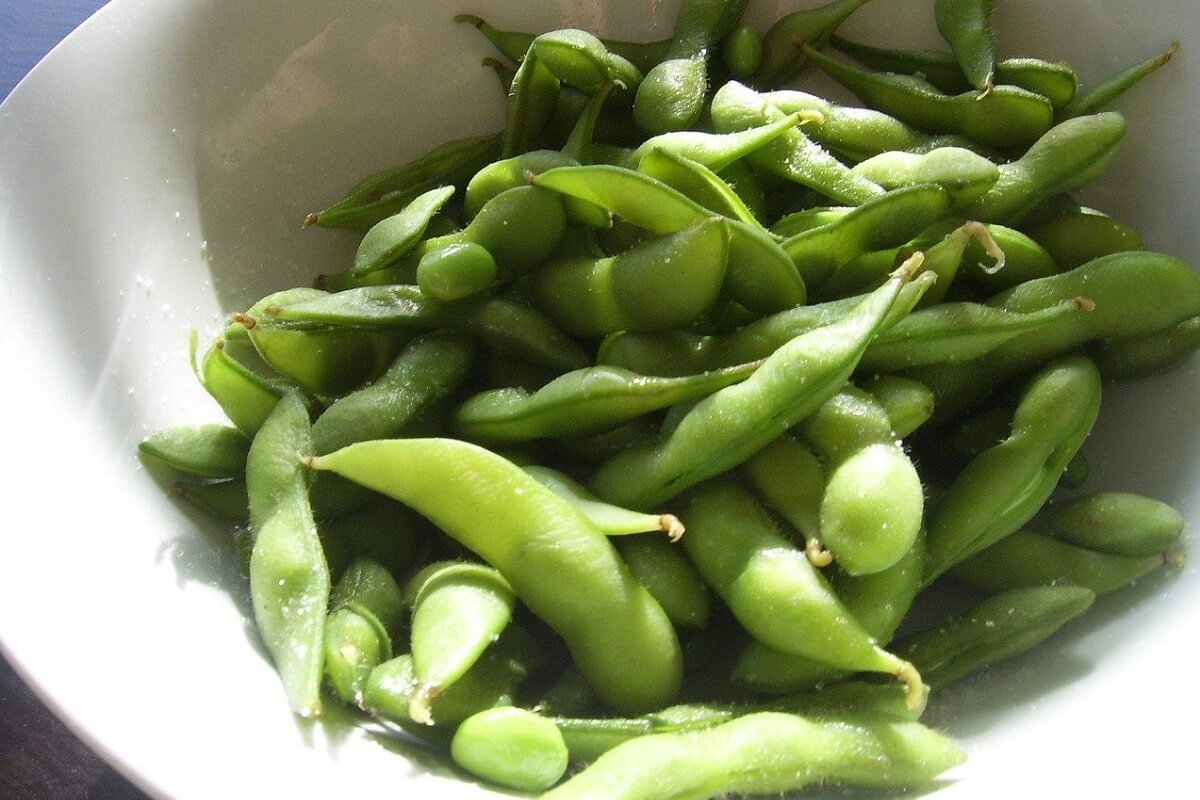
If you are a farmer like me you may think of soybeans as a livestock crop. However, the vegetarian community has brought soybeans front and center because of the high protein value. Foods like tempe, tofu, and edamame are popular in grocery stores.
Related Post: Plant-Based Protein: The Definitive Guide
Soybeans are easy to grow and aren’t reserved just for vegetarian dishes. They will round out and add nutrients to chili, stews, and rice dishes. Home-made edamame is a great way to use your freshly picked soybeans.
Growing Soybeans
Soybeans are easy to grow and are very prolific. They have similar growing requirements to green beans and will enrich your soil with nitrates. Remember to inoculate the beans when you plant them.
Direct seed when the soil has reached 60 degrees Fahrenheit. Soybeans want to bask in full sun and take between 75 and 100 days to mature depending on the variety. My favorites are Envy and Sumo.
Sow seeds about 4 inches apart and 1 inch deep. The plants get up to 2 feet tall. They have secure stems and usually do not need staking. However, it does help to hill them, especially if you expect stormy weather.
Harvest fresh beans right when the bright green color starts to fade, but before they turn yellow. Remove the pods from plants and steam them for 5 minutes. This will make it easier to open the pods.
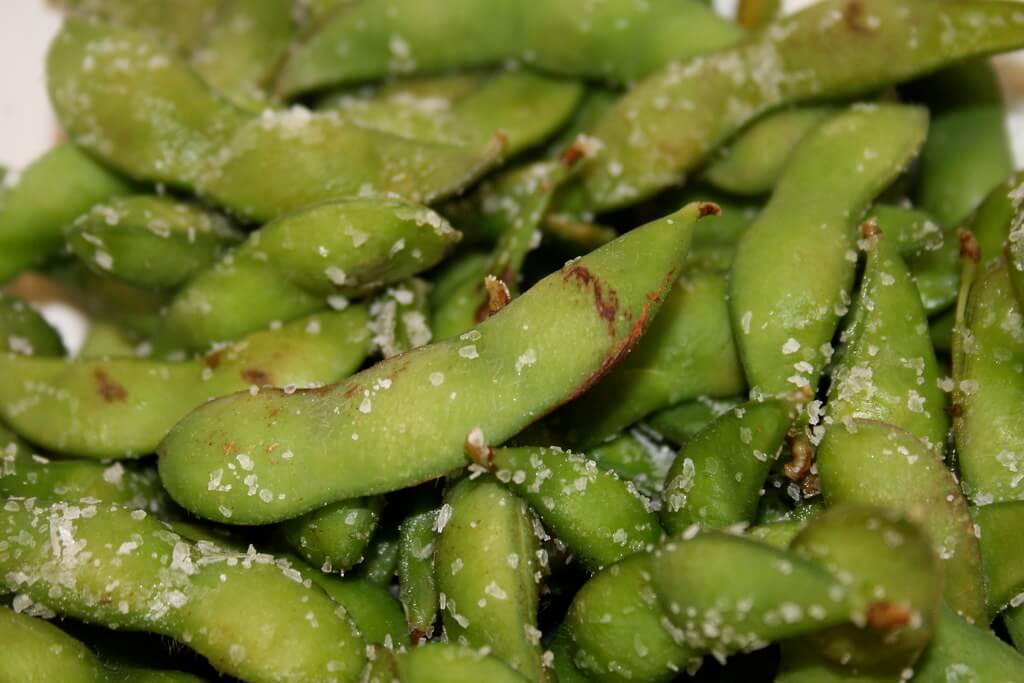
Boil fresh beans in saltwater for 5 minutes to complete the cooking process. Then they are ready to add to whatever dish you are making.
Related Post: Growing Green Beans
For dried beans, let the pods dry naturally on the plant. Then thresh the beans by hitting the plants on something. For instance, banging the plants inside a clean garbage can will cause the beans to pop open. You can store the dried beans in a canning jar on the shelf or in the freezer.
Growing Asian vegetables is a great way to expand your food palate and make some delicious dishes at home. What’s your favorite Asian vegetable? How do you like preparing them for dinner? Let us know in the comments below!










































Leave a Reply